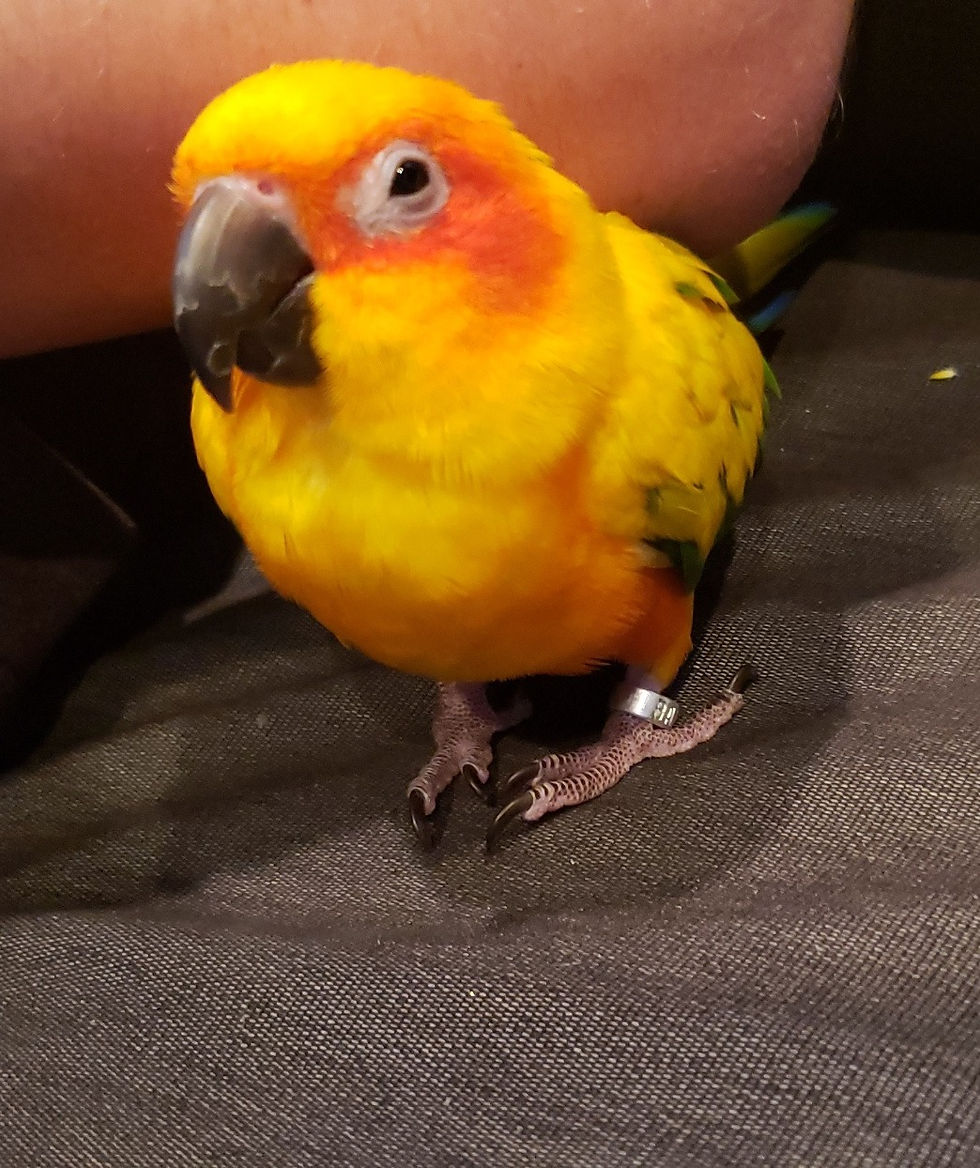Bird Brain: The Watchening
- pearlsc
- Apr 18, 2021
- 3 min read
Quite honestly I never really gave birds too much thought due to the fact that birds feel like the one animal furthest from us -literally! They're everywhere in giant, looming trees, far off coasts, and during certain seasons, they'll be on a whole other side of the world! Unless you happened to be a Disney princess, I didn't think birds and humans had much to share besides the planet itself. As "Bird Brain" questioned, did birds act on instinct or actual intelligence? Truthfully I don't think I wouldn't have been as nearly interested in the documentary were it not for my friend Scott's fun antics with his sun conure, Sunny. While watching the documentary, I texted him about what I was watching and genuinely asked him: "Do you think Sunny is intelligent?" to which he responded with a "Yes".

A picture of Sunny the sun conure provided by my friend Scott. Expressive and playful, Sunny's always entertaining both my friend with her shenanigans, squawking at the weekly garbage truck and requests for constant company. The "Bird Brain" documentary goes over a majority of the points in the TIME articles but in 52 minutes, but its primary focus lended itself towards the more problem-solving and insight-related areas of intelligence and likeness to humans. As John Marzluff explained: "The ability to think flexibly is certainly a hallmark of a cognitively advanced animal" (21:29). This flexibility in thinking lends itself to adaptability in not only surviving but living.
I was immensely fascinated in seeing how researchers like Auguste von Bayern introduced an innovative multi-access box, built to be solved using a total of four solutions, and even more impressed and in awe at the equally innovative thinking that Wek the New Caldenonian crow did to figure out other solutions. Animal research wasn't just a matter of watching for one certain desirable behavior (pulling a string, picking a correct item, etc.) , but I realized that it came down to observing changes and innovations in their behaviors, how they interacted with the world around them, and the implications that came with these observations.
The greater source of connection between the TIME articles and the documentary itself come mostly towards the end of the documentary, where emotional intellect comes to play. One of the things Princeton University's Christon Riehl lists birds having is the capability of "putting themselves into the experiences of other animals" (51:47). This capability has another name: Theory of Mind. It's the odd gold standard for all animals to measure against as I've seen in at least two of the TIME articles and even while reading Carl Safina's book. In the documentary, there were two instances shown that I felt were the simplest for humans to understand the emotional capacity birds had. The first was Marzluff and his team's experiment in which a dead crow decoy was placed in view. Following this, crows all around gathered in what Marzluff described as a "crow funeral". The second instance was the observation of one crow coming to comfort a distressed friend. Despite the species barrier, grief and empathy are two of the most fundamental, primal emotions that humans and birds share! The grief from the crow funeral also reminded me that the level of grief had to have come from the camaraderie that was built before it. And with this came the implication that birds too saw value in social bonds beyond mutual altruism as explained in the TIME article about friendships. There was something more in birds than ingrained instincts. All of the actions exhibited in the documentary came from their own developed and evolving intelligence.



Hi Pearl
I also agree that I never gave birds much thought before this documentary or thought they had much intelligence. I think you could've expanded a little bit on how it relates to all of the times articles to give the readers a basic idea. But I love the part where you related the emotional experiments to the articles in class.